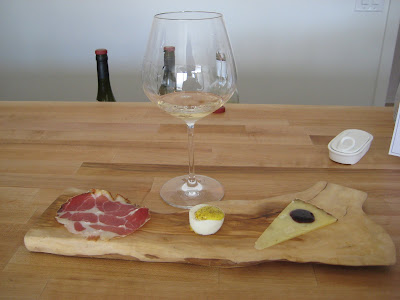On August 31, 2010, Robert M. Parker, Jr. released his much anticipated tasting notes and ratings for Rhône wines from California's Central Coast (plus scores for Pinot Noir and Chardonnay). Parker tasted hundreds of wines over a period of two months, but only scored half of the total wines submitted by vintners for this edition of
The Wine Advocate.
Not surprisingly, Parker offered some rather high scores and flattering comments for the usual suspects (i.e. Alban, Saxum, Sin Qua Non). Let's get the obvious out of the way; Parker has been in the wine business for approximately 35 years. He has tasted tens of thousands of wines over this period. Over time, his palate has honed into a particular style of wine - ripe, concentrated and fruit-forward. We drink and rave about what we like and so does Parker. I doubt he is immune from any bias, especially after decades of tasting and scoring wines.
Unfortunately, Parker took it upon himself to offer some less than flattering comments about a few Santa Barbara County vintners and wines, while heaping praise upon others whose wines may or may not be widely accepted by most novice wine consumers, except for the fact that they scored 90+ points. After carefully reviewing most of Parker's tasting notes and scores for the Central Coast Rhône Rangers, it was obvious to me that the current edition of
The Wine Advocate lacked copy-editing (i.e. calling Craig Jaffurs, "Greg Jaffurs") and missed the mark on a few wines, which have been widely received by wine consumers and bloggers. There is no reasonable explanation for Parker's critiques. Here's one example:
In describing Tercero Wines, Parker notes that "these are all relatively straightforward, one dimensional efforts." He fails to rate the 2007 Mourvèdre and calls it "without any ripeness" and "largely a failure." Contrast this with comments from bloggers and wine consumers at the Rhône Rangers Los Angeles Tasting, as well as other posts online and you get a far different picture about this wine, but fail to grasp how Parker came to his own conclusion. The point is that Tercero Wines received similar scores to other wines, but Parker took it upon himself to offer a rather scathing criticism of these wines. On top of it, Wine Spectator offered a glowing score (91 points) for the 2007 Cuvée Christie, but Parker seemed disinterested in this wine too (80 points).
Rather than add to the speculation surrounding Parker's tasting notes and ratings, I would like to point out that Parker is one of many "wine critics" in the business. While his opinion matters for some, wine consumers can find many more accurate and reliable alternatives to Parker and the other wine critics, by searching for tasting notes from fellow wine consumers at the highly-regarded
CellarTracker. Social media and blogs are offering many other alternatives to the traditional rating system and tasting notes. This is helping consumers make better informed decisions about tasting and purchasing wines, as well as helping wineries market their wines to a broader consumer base.
I am looking to forward to tasting many of the wines that Parker scored in the recent edition of
The Wine Advocate to determine for myself if they deserve these scores or come close to the descriptions provided by Parker and his scribes. Parker's scores should inspire wine consumers to seek out many of these wines and help people plan their next wine tasting vacation to Santa Barbara County, San Luis Obispo and Paso Robles. If you interested in knowing about some of the scores, add your question in the comments section.















